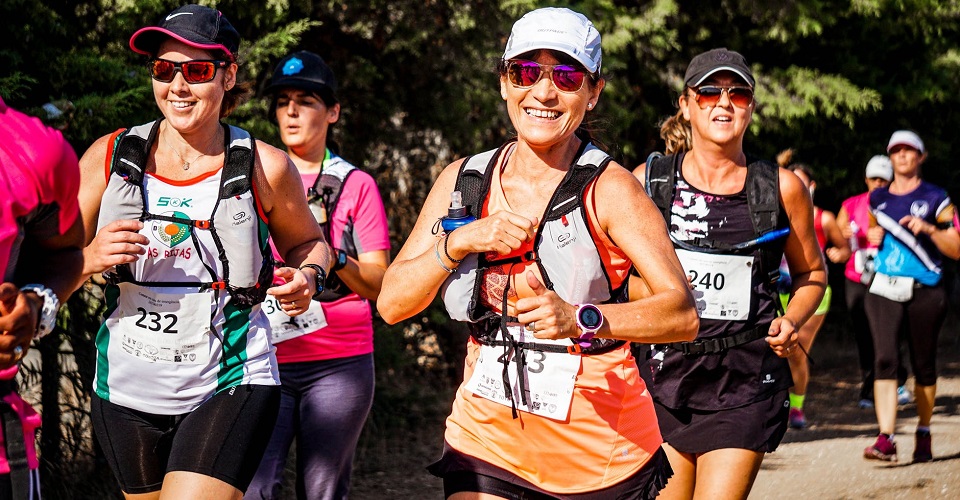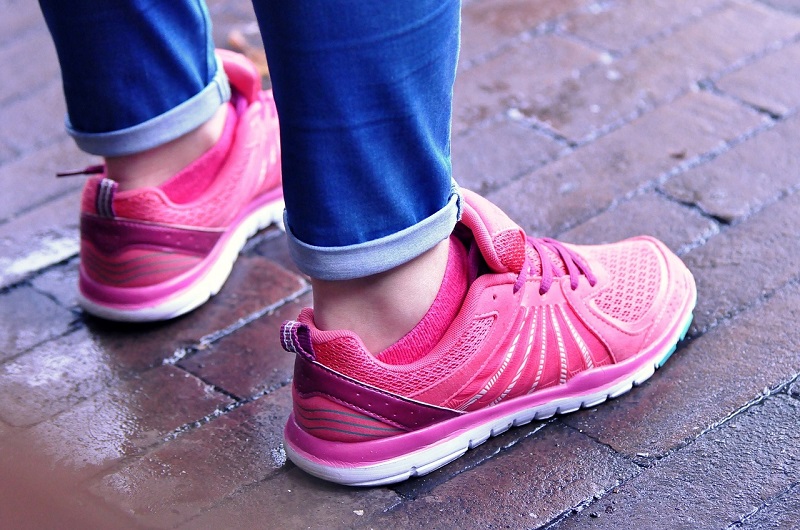
Our Editors independently research, test, and rate what we feel are the best products. We use affiliate links and may receive a small commission on purchases.
Completing a half marathon can be the achievement of a lifetime. What makes it such an achievement is the motivation and dedication you need when training for it, and knowing how to train for a half marathon. Completing a half marathon is doable as long as you take the time to train properly before the big day.
We have all the information you need to get started on a training plan, stock up on all the essential gear, and start with the most popular tips from runners who have already made this happen and want to see you accomplish it as well.
Are you ready to learn how to get from this point to the finish line?
What is a Half Marathon?
In 390 BC, it is said that a soldier ran from Marathon, Greece all the way to Athens to announce that the Persian army had been defeated. This legend made way for the modern marathon.
A marathon is 26.2 miles, the same distance that this soldier ran from Marathon to Athens. A half marathon, or 13.1 miles, is still a formidable feat, and might even be your next step on your way completing a full marathon.
Potential Challenges
To know how to effectively train for a half marathon, it’s important to know what challenges you will face on the day of the race. If you are struggling with these during training, it’s a sign that you’ll need to focus on overcoming those challenges before the actual race. These challenges may cut your run short, preventing you from finishing, so being prepared is important.
What are the challenges most half marathon runners face?
- Dehydration
- Loss of Form
- Muscle cramps
- Low blood sugar
Meeting Those Challenges
Before thinking about what kind of half marathon training plan you’d like to create for yourself, you’ll need to know what you’ll be facing on race day.
Only “shoes on the pavement” training will prepare you for what you will experience when running long distance. Training to meet these challenges is one step to creating your 12-week half marathon training schedule.
Let’s look at the 4 biggest challenges we mentioned above.
Dehydration
It doesn’t matter whether you are running a few miles around the block are you have 13.1 miles ahead of you, it is vital to stay hydrated. Over the course of a run, you will be using or losing when it comes to hydration. If it is a hot or humid day, you’ll need to focus on hydration even more.
Always be sure to have a hydration source with you, whether it is a bottle of water or a sports drink. As you become dehydrated along the way, your muscles will become fatigued more quickly. Be sure to research where the hydration stations will be during your half marathon.
Loss of Form
During shorter runs of a few miles or less, your muscles will become fatigued but not to the point that you lose the healthy and efficient running form you’ve worked so hard to perfect. During a half marathon, your muscles will be tired and sore especially as you reach the end.
This is when your mental stamina kicks in. Even if you have to focus on every stride and even your posture to make sure you are in correct form, it’s important to keep that form to prevent injury as well as to use your remaining energy efficiently so you can finish the race.
Muscle Cramps
Muscle cramps may be inevitable as a runner. However, there are many things you can do to prevent them. Be sure to create a pre-run routine that includes warmups and stretches.
Always have water or a sports drink with you as dehydration can worsen muscle cramps. If you start to feel a muscle is tensing up, slow down to lessen the tension slowly or take a quick break to do a few stretches before continuing on.
Low Blood Sugar
Any kind of physical activity that is performed over a long period of time can have an adverse effect on your blood sugar. Low blood sugar, also called hypoglycemia, can come on quickly. While you may not be able to prevent low blood sugar, you can prepare for it by having the proper nutrition and hydration with you at all times.
The symptoms of low blood sugar are different for everyone, so it’s important to know what your specific symptoms are in the event that your blood sugar level drops. Proper training will help you know the signs and how best to combat it.
Creating a Half Marathon Training Schedule
While there are already training schedules created for those who wish to attempt a half marathon, these plans aren’t one-size-fits-all. You may want to study these training plans and use several to create the right one for you.
You may also want to start with one of these plans and alter it to fit your own current fitness level and the amount of time you have until race day. Another option is to work with an established runner who can help create the perfect half marathon training plan for you.
Can You Run Three Miles?
The first goal of any training plan that will get you to a half marathon is to be able to run 3 miles. If you are already a runner, even a novice or inconsistent runner, you may already be at this point.
If you can already run 3 miles, spend a week or so trying to improve your 3-mile run time. This is the first step toward creating your 12-week half marathon training schedule.
If you haven’t already started running or you haven’t been able to run a 3 mile route, there’s an easy way to get you to this point very quickly. Plan your first week as a runner with three runs at least 30 minutes long during the week. Plan a much longer run on the weekend.
If you got to the 3-mile mark but it was difficult, or you weren’t able to get to the 3-mile mark at all, repeat this routine for another week.
The length of time it takes and how you feel after this one to two-week training will help you determine how much time you need to be fully prepared for a half marathon. A 12-week half marathon training schedule is the most common for new runners.
Building Stamina & Endurance
Completing a half marathon is not about how fast you run. It’s considered a race, but the victory is in making it to the finish line. To be able to do this, you will need to build your stamina and endurance over several weeks or months.
When running to build both stamina and endurance, it’s not about how long it takes, it’s about being able to run longer and longer distances. In the case of a half marathon, it’s about being able to run over 13 miles.
While it’s important to train outdoors so you’re prepared for any inclement weather during the race, you may also want to invest in a home treadmill to keep up with your best half marathon training plan.
Pre-Built Half Marathon Training Plans
If you’re looking for the best half marathon training plan that has already been designed for your level of physical fitness and running ability, Runners World has several available. Just remember, as we said before, the same training plan that’s perfect for someone else may not be perfect for you. If you choose a plan or create your own, and it doesn’t seem to be working for you, be sure to make adjustments or create a new plan altogether.
Staying Hydrated
Part of the training process is learning what your body needs to stay hydrated on longer and longer runs. While training, you may want to wear a runner’s belt that allows for a water bottle, or even one of the best hydration vests or backpacks.
Because running such a long race can easily cause your blood sugar to drop as you burn more and more carbohydrates, you may want to try staying hydrated while running with a sports drink. There are many sports drinks to choose from so it’s about finding the right one.
Eating Right
When running an endurance race such as a half marathon, it’s important to give your body what it needs in the form of nutrition. Sports drinks can certainly help, but your body also needs carbohydrates and protein.
When on your training runs, be sure to bring a high protein snack such as a granola bar, peanuts, or other foods that can give you the fuel you need to continue.
The Right Running Shoes
When that Greek soldier completed that marathon run, you can be certain he wasn’t wearing shoes designed for the task.
The right running shoes for you will give you the support and cushion you need while preventing annoying irritations such as heel pain, shin splints, cramps, and more. This is especially true if you choose running shoes that help combat the problems you’re prone to, such as running shoes for shin splints.
Choosing the best running shoes for you will require you to analyze the shape of your foot. Is it narrow or wide? Is your arch high or do you have flat feet? Do you suffer from pre-existing conditions such as bad knees or lower back pain? There are running shoes for flat feet just as there are running shoes for bad knees.
Just as with the training plan for your half marathon race, no one running shoe is perfect for everybody. Be sure to take your time in choosing the best running shoe for you.
Staying Motivated
There are many ways to stay motivated as you train for a half marathon. Be sure to let all your family and friends know of your determination to complete a half marathon. Let them keep you motivated by asking about your progress and by sharing your milestones with them.
It may also help to have a training buddy. If you both have the same goal, keeping each other motivated will be much easier. When conquering a 12-week half marathon training schedule, having a partner can help.
Tapering Your Training Before Race Day
It may seem counterproductive but slowing down your training in the week or two before the big day is important. You need to have the endurance, stamina, and strength to complete the race. However, if you keep pushing hard on your training right up to the day of the race, your body will be tired and unable to finish the 13.1 miles.
During that week or two, you should still exercise and run, but not quite as often or as long. Keep your body in top shape but allow your muscles to rest in anticipation of running day. Taking a few days off will make you feel ready on the day of the race.
Best Half Marathon Training Plan Tips
Not only am I a runner, I know many other runners. Over the years, we’ve all learned what works and what doesn’t work when training for a half marathon. Together, we’ve created a list of the top five tips that have helped us when training with the best half marathon training plan.
Are you currently training for a half marathon and you’ve discovered a tip you’d like to share with us? Have you already achieved a half marathon race and you’d like to help those on the path to doing the same? We’d love to hear from you!
Tip #1: Sign Up for a Race
While most of us would like to say we will take two months to train for a big race, often times it doesn’t happen unless you are already signed up for one and have a limited amount of time. If you’re already a novice runner, it’s possible to be ready for a race that is 8 to 10 weeks away.
However, if you have a bit more training to do you should look for a race that is 12 to 14 weeks away so you have plenty of time to ensure you’re ready. Once you sign up for that race, you’re forced to train, so sign up for a race and create the best half marathon training plan for you.
Tip #2: Find a Training Partner
Your training partner doesn’t have to be an experienced runner. In fact, this training buddy can help keep you just as motivated as you keep them motivated. Having more than one training partner can help to keep everyone in the group determined to meet their goal of completing a half marathon.
You can choose a friend or family member as a partner, or you may be able to find a partner as dedicated as you are in an online forum or even a gym. Training with a partner or group makes training easier for all.
Tip #3: Celebrate Successes
Crossing the finish line of the half marathon on race day is not the only success you will see. It is as much of an accomplishment to reach 5 miles as it is to reach 13.1. Give yourself milestones that you will reach along the way and celebrate every one of them with not only your training partner but with the family and friends that are cheering you on.
Tip #4: Incorporate Strength Training
By incorporating strength training into your half marathon training routine, you help to strengthen and stabilize the joints involved in running long-distance. The joints you want to focus on when strength training are the hips, knees, and ankles.
While incorporating strength training you can also help to increase the overall fitness level of your entire body. Training for a half marathon isn’t just about running farther and farther, it’s about preparing your body for the stress of running 13.1 miles.
Tip #5: Prepare the Night Before
We can promise you it will be hard to sleep the night before your first big half marathon. However, before you lay down, you will want to pack up everything you need for the next day.
Make sure you have all your running gear laid out, from your outfit to your shoes and from your headphones to your favorite playlist. You may even want to listen to that playlist as you try to get some sleep.
NOTE: Make sure your playlist is as motivating it can get. You’re going to need every ounce of inspiration to keep going and the right playlist can make that happen!
Are You Ready For Race Day?
Feeling ready at the starting line isn’t just about training your body to go the distance and knowing, mentally, that you can make it to the other side. You also need to know what challenges you may face whether you’re at mile 2 or 12. Every runner is different and will train differently, and also have different challenges along the way.
The most important part when learning how to train for a half marathon is to listen to your body. You may have to work around a challenge or train through it, but only your body knows what you can do and how to do it.
You wanted to know how to train for a half marathon. Now you know. Are you ready?




